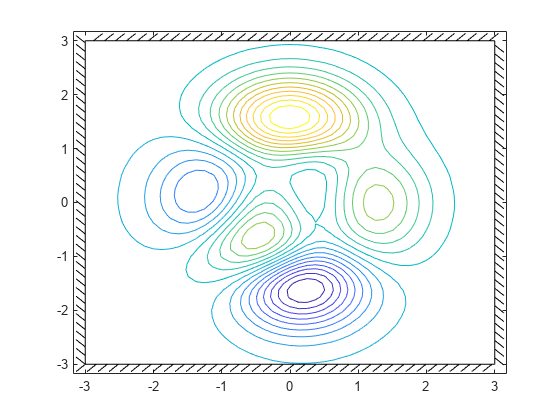altitudeEnvelopeContour
Syntax
Description
Draw Contour Plots with Load Factors and Meshes
altitudeEnvelopeContour( draws a
contour plot of the loadfactor)loadfactor matrix in the
x-y plane. This function is based on the
MATLAB®
contour function. The
x-coordinates of the vertices correspond to the column indices of
loadfactor and the y-coordinates correspond to
the row indices of loadfactor. The contour automatically chooses the
contour levels.
altitudeEnvelopeContour(
draws a contour plot of the airspeed,altitude,loadfactor)loadfactor matrix using vertices from
the mesh that airspeed and altitude define.
Draw Contour Plots with Customizations
altitudeEnvelopeContour(___,
plots an altitude envelope contour specified by the desired levels
levels)levels.
altitudeEnvelopeContour(___,
plots an altitude envelope contour specified by the desired line spec
LineSpec)LineSpec.
altitudeEnvelopeContour(___,
plots an altitude envelope contour specified by one or more
Name,Value)Name,Value arguments.
altitudeEnvelopeContour(
draws an altitude contour plot onto the axes ax.ax,___)
Return Matrix, Contour Object, and Boundary Line Object
[
returns contour matrix c,h,bline] = altitudeEnvelopeContour(___)c, a contour object h,
and a vector of boundaryline objects b. To label
the plot, use the c and bs arguments as inputs
to the clabel function when using the
LabelSpacing property.
Tip
For more information on the contour matrix, see the Contour Properties property for contour objects.
Examples
Input Arguments
Name-Value Arguments
Output Arguments
More About
Version History
Introduced in R2021b



